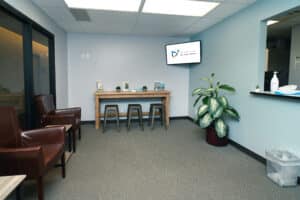FAQ
FAQ
Have a Question?
Your sinuses are hollow air spaces within the bones surrounding the nose, in the forehead, and between the eyes. Sinuses produce mucus, which drains into the nose. Sinuses play a role in filtering and humidifying the air we breathe, they help lighten the weight of our skull (head), and act as protective cushions (air bags) for our brains in the event of a trauma to the face.
Sinusitis is an inflammation of the sinus lining. If the sinus opening becomes swollen shut, normal mucus drainage may not occur, and this may lead to infection and inflammation of the sinuses. Acute sinusitis means that the inflammation has lasted for less than 4 weeks, and chronic sinusitis implies that the inflammation has gone on for longer than a 4 week period of time.
Common symptoms include:
- Facial pain, pressure, congestion or fullness
- Difficulty breathing through the nose
- Discharge of yellow or green mucus from the nose
- Teeth pain
- Loss of the sense of smell or taste
- Headache
- Fatigue
- Sore throat
- Bad breath
- Cough
The first line of therapies for acute or chronic sinusitis is medical based, and this can include antibiotics, decongestants, pain relievers, anti-inflammatory medicines, topical solutions/irrigations, and anti-allergy medications and treatments. CT scans are an integral part of the evaluation and work-up for sinusitis as it gives a comprehensive view of the sinus anatomy and degree of inflammation. Surgery (Endoscopic Sinus Surgery or ESS) is reserved for sinusitis that persists despite medical therapies and involves opening the sinus cavities to remove infection and help clear inflammation. Balloon Sinuplasty- using a catheter with a balloon to open the sinuses- may also be an option to treat chronic sinusitis in select cases.
Services










